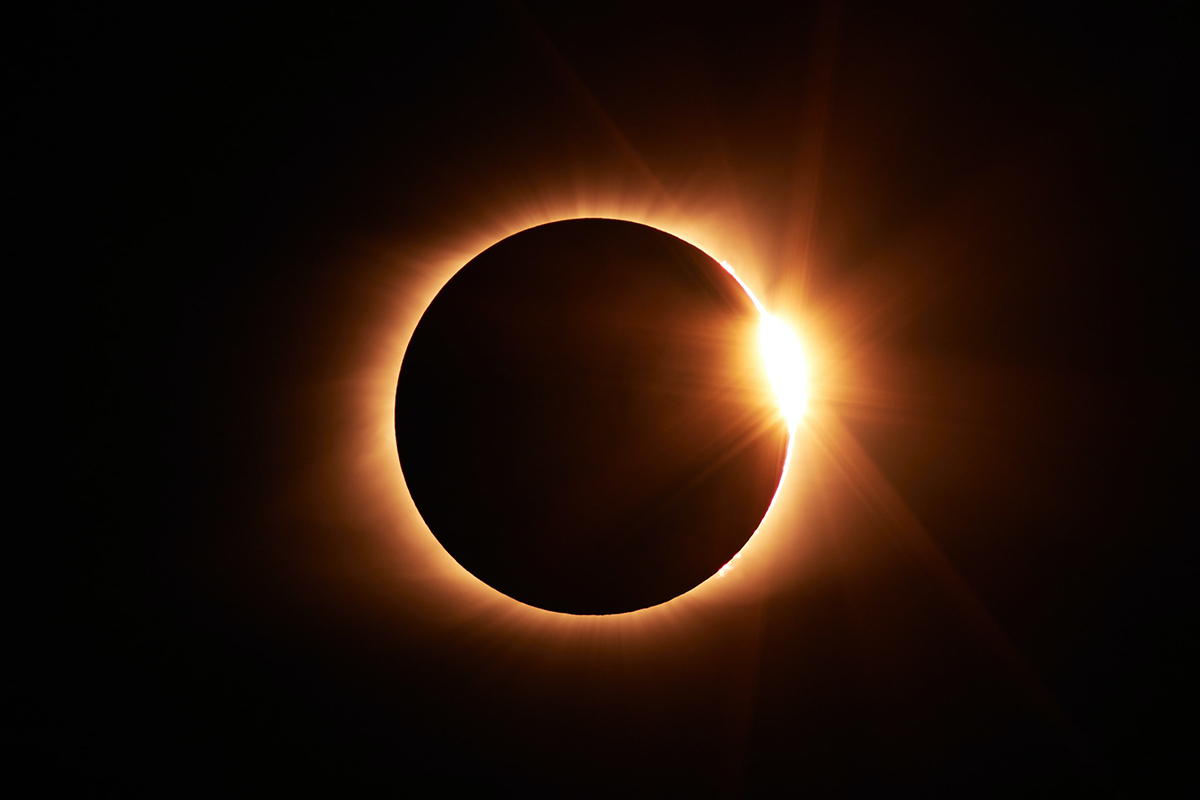There are different celestial phenomena of a positional nature, that is, whose nature is related to changes in the position of the stars and resulting in a significant event when observed from Earth. Here we find events that occur at specific times and can be easily predicted (e.g. using online tools or software), to plan their observation. Most of them have no associated effect on our planet, other than providing an interesting instance to contemplate and/or photograph.
Perhaps the best known celestial phenomenon and one that has been given the most importance in ancient cultures. It occurs every time the new Moon passes right between the Sun and the Earth, obscuring the solar disk for a few moments. Two curious variables coincide: the Sun is 400 times larger than the Moon, but the Moon is in turn 400 times closer to the Earth than the Sun.
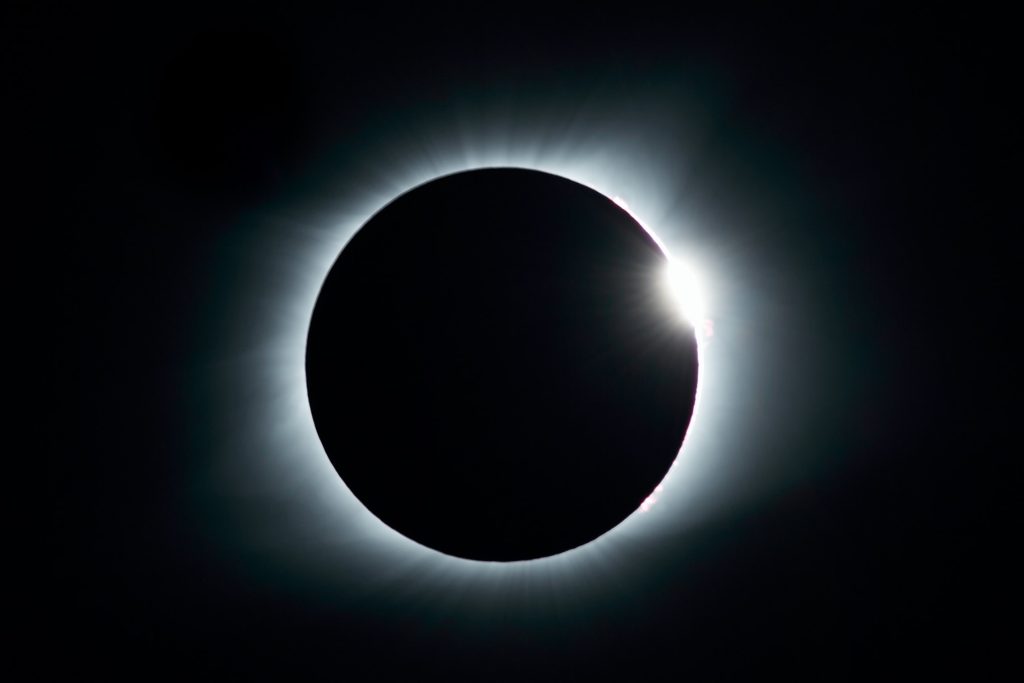
Therefore, the solar and lunar disk appear practically the same size, making eclipses possible. There are no eclipses every time there is a new Moon, since its orbit has an inclination of 5º with respect to the ecliptic, and most of the time the Moon crosses above or below the Sun. A minimum of 2 eclipses occur in a year, of any type. Eclipses are classified according to the portion of the Sun that is covered, having:
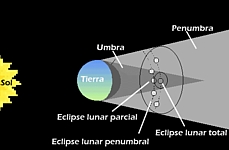
- Total solar eclipse: The Moon completely covers the Sun (an instant that can last up to ~7 minutes and occurs on average every 18 months).
- Annular solar eclipse: The Moon passes in front of the Sun, but if our satellite is at its apogee (farthest distance from Earth), its disk appears slightly smaller than the solar disk and does not cover it completely - the eclipse is in the shape of a "ring"; They are 20% more frequent than total eclipses.
- partial solar eclipse: The Moon covers part of the Sun (instants that can last up to ~4 hrs and are more frequent than total and annular moments).
A couple of curiosities about eclipses is that when this phenomenon occurs in its entirety it is possible to see the solar corona, a quite impressive fact; At an amateur level, this can only be practiced with appropriate filters, and in no case should you look directly at the Sun; As a second curiosity, it stands out that solar eclipses have a limited time.
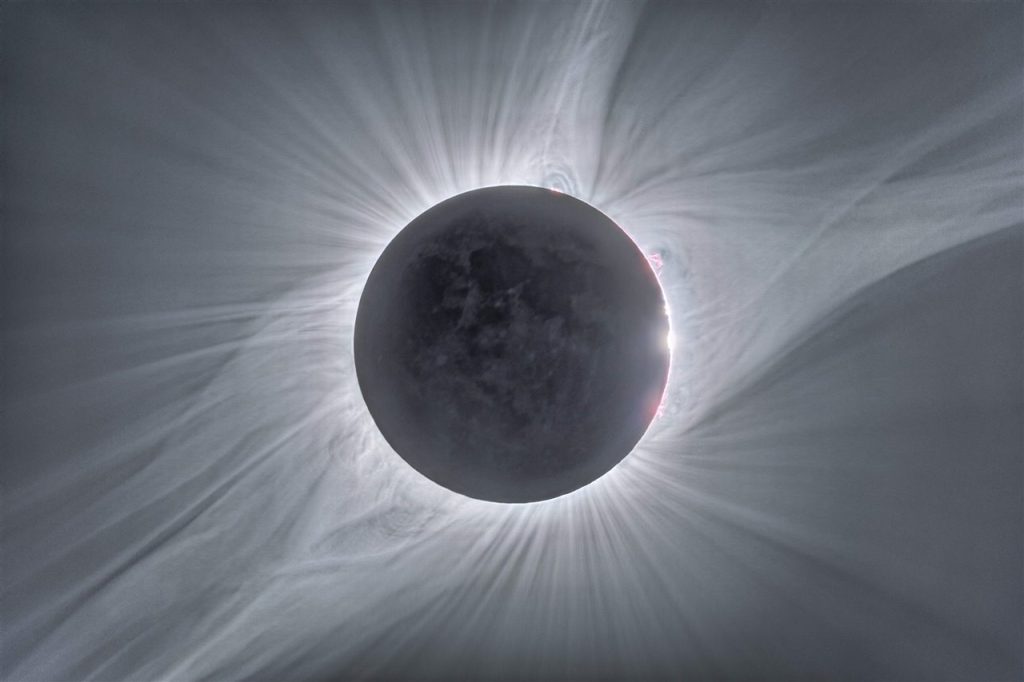
The Moon moves away about 3 cm from the Earth each year, which will slowly but progressively stop completely covering the Sun; There will no longer be total eclipses, but at most they will be annular. Below is the dynamics presented by solar eclipses.
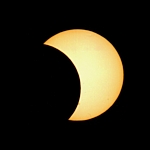
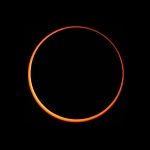
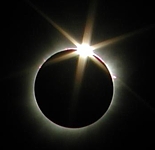
A lunar eclipse lasts much longer than a solar eclipse (around a couple of hours), which presents a great advantage for its observation. It occurs when the full Moon passes through the Earth's shadow cone, “hiding” the lunar disk at times; Although at first glance it would be logical for the Moon to remain hidden, in reality it is still visible, but acquiring a reddish color: this is due to the influence of suspended dust and concentration of ozone in the atmosphere.
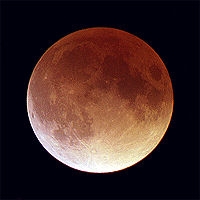
The periodicity of lunar eclipses is variable, and none may occur during the year, or up to a maximum of 3 of them may occur. Just as in solar eclipses, lunar eclipses are also classified according to the portion of the Moon that is “hidden” by the shadow cone or the vicinity of it, having:
- Total lunar eclipse: The Moon is completely covered by the Earth's shadow cone (umbra); the maximum degree of “darkened” tonality is reached.
- Partial lunar eclipse: The Moon is partially covered by the Earth's shadow cone; Only a portion of the moon will be “hidden” and the rest will remain equally illuminated.
- Penumbral lunar eclipse: The Moon is partially or totally within the penumbral area that surrounds the Earth's shadow cone, so it will not be completely "obscured."

Lunar eclipses, unlike solar eclipses, can be observed directly without any special protection or filter, either with the naked eye or using some optical instrument. Below is the dynamics presented by lunar eclipses
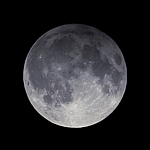
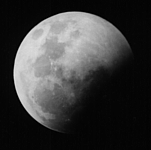
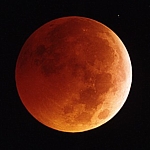
This is the name given to a relative position adopted by two or more celestial bodies in the sky. When an object passes in front of or very close to another (e.g. a planet passing in front of a star). Logically, these bodies are not close nor do they “collide” with each other, it is simply an effect of orbital movement, where both the planets, the Moon and the Sun vary their position, as do the stars during the year, due to their apparent movement. Two subclassifications stand out in this phenomenon:
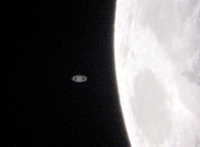
- inferior conjunction: It occurs only on planets with an internal orbit with respect to the Earth (Mercury and Venus), when they pass in front of or very close to the Sun; When they pass by, the so-called “transits” occur.
- superior conjunction: It occurs both on planets with an internal orbit relative to the Earth (Mercury, Venus) and an external orbit (Mars, Jupiter, Saturn, Uranus, Neptune), when they are relatively aligned with the Sun and the Earth, that is, hidden behind the disk. solar.
This is the name given to the moment when a planet is diametrically opposite to the Sun in the sky, with respect to a terrestrial observer. Here there is a “straight line” between the Sun, the Earth and the planet (in that order), which can only occur with the Moon and the outer planets (Mars, Jupiter, Saturn, Uranus and Neptune). When a planet is in opposition it is the best period to observe it, since it is at its minimum distance from the Earth and its visible diameter is much greater.
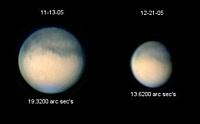
The observations may be more or less favorable, depending on the point in the orbit where the opposition (also called approach) occurs; If it occurs near the planet's perihelion (its minimum distance from the Sun) the observation will be more favorable; If it occurs near the planet's aphelion (its maximum distance from the Sun) the observation will be less favorable.
This is the name given to the moment when a celestial body passes in front of another larger body, whereby the latter is partially blocked. Transits can be seen when Jupiter's satellites pass in front of it, as well as when the planets in inner orbit with respect to the Earth (Mercury and Venus) transit the disk of the Sun, which when observed is seen as a small circular "spot" passing ahead of our star.
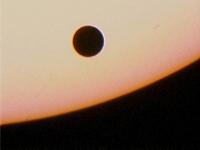
A solar eclipse is also a transit, since in this case the Moon passes in front of the Sun, although in a much more spectacular way because it completely covers it (simply due to a coincidence of apparent sizes).


